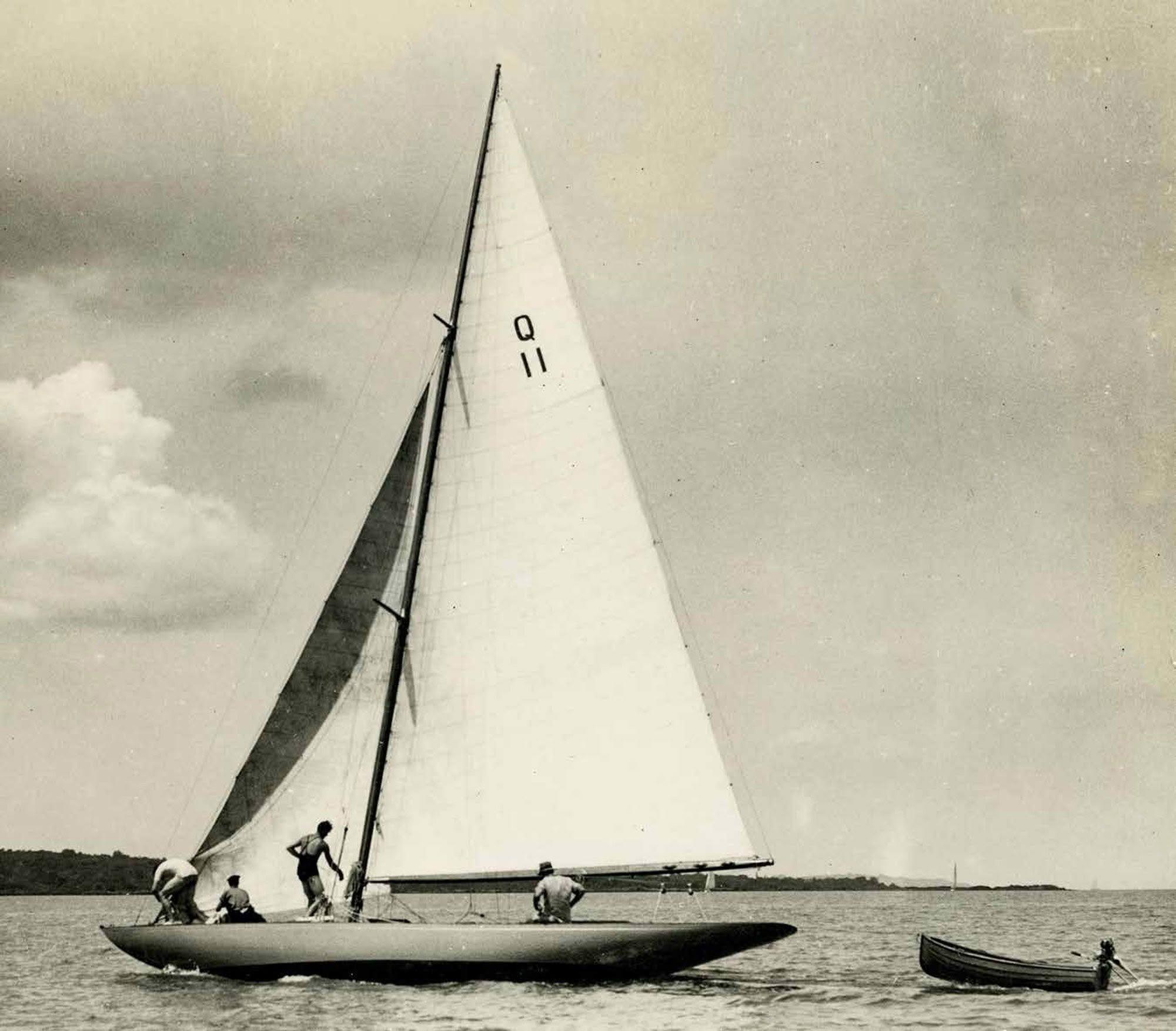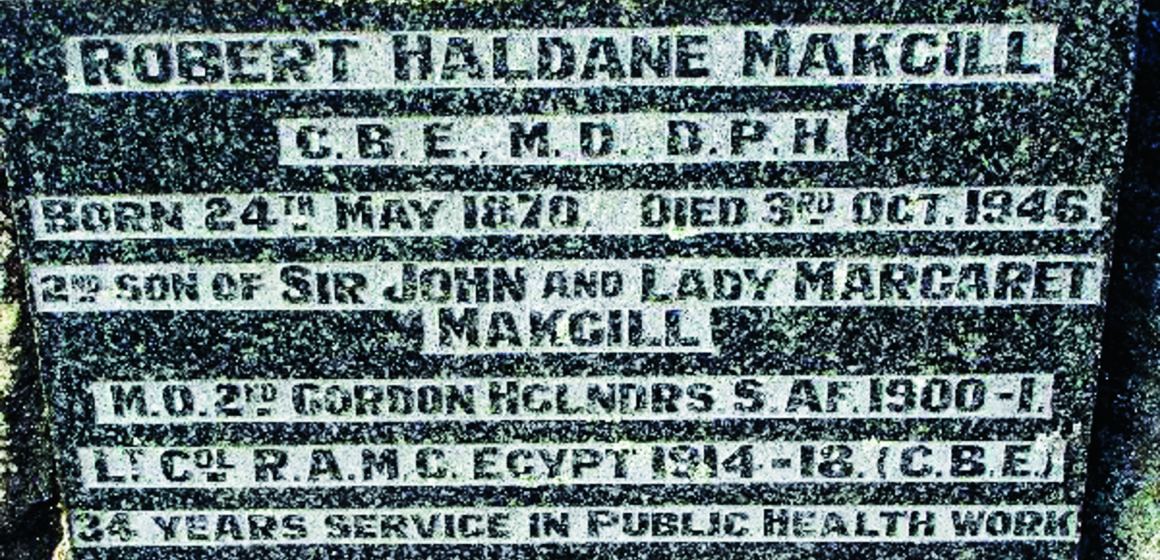

In last month’s Vintage View Harold Kidd hinted at the powerful influence of two experienced yachtsmen on the containment and defeat of the Spanish Flu pandemic in this country in 1918 and 1919. Their knowledge and intense efforts saved many lives. One of the was Dr Robert Haldane Makgill.
In last month’s Vintage View I hinted at the powerful influence of two experienced yachtsmen on the containment and defeat of the Spanish Flu pandemic in this country in 1918 and 1919. Their knowledge and intense efforts saved many lives.
Dr Robert Haldane Makgill was born at Stirling, Scotland in 1870, the second son of Captain Sir John Makgill, the 10th Viscount of Oxfuird, and Margaret Isabella Haldane, the sister of Lord Haldane, the Lord Chancellor of Great Britain from 1912 to 1915.
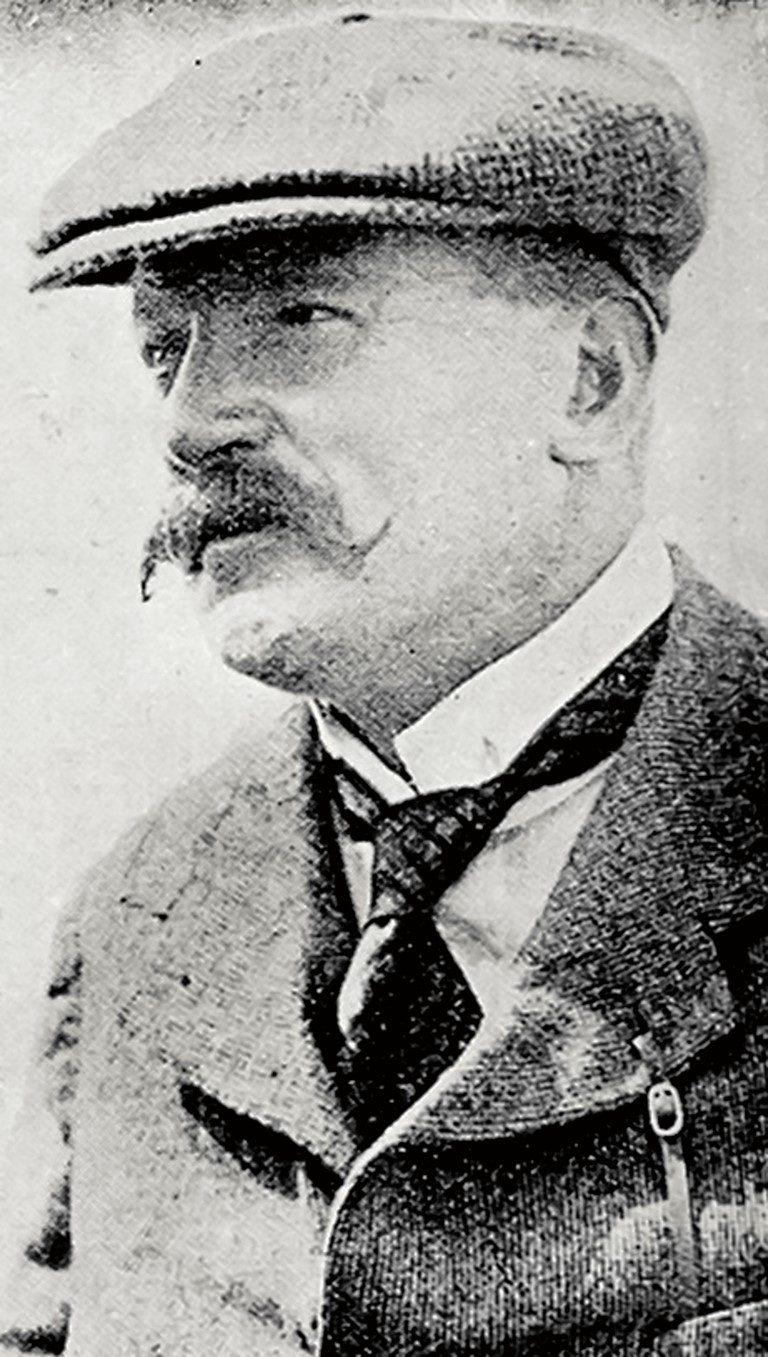
Another brother, John Scott Haldane, was a prominent scientist and his son, J.B.S. Haldane, an even more famous scientist who, in 1929, described how life had arisen from the interaction of chemicals with sunlight or lightning in Earth’s primordial oceans.
Sir John Makgill moved with his family to New Zealand in 1881 and established an extensive farm called Brackmont at Taurangaruru, near Waiuku. Later he acquired more land at Orua Bay at Manukau Heads, and was a director of the Waiuku and Onehunga Steam Navigation Co which ran the steamers Manukau and Weka.

Dr Makgill finished his primary schooling at Waiuku and had his secondary schooling at Auckland Grammar. He returned to Scotland to obtain his medical degrees at Edinburgh, graduating MB, CM in 1893, with first class honours, having specialised in epidemiology.
After his return to New Zealand he became resident surgeon and bacteriologist at Auckland Hospital between 1894 and 1897, and returned to Edinburgh to gain his MD in 1899. After service in the South African War as a Medical Officer with the 2nd Battalion, Gordon Highlanders, he did a Diploma in Public Health at Cambridge University.
Back in Auckland he was appointed District Health Officer, showing outstanding skill. He was appointed Medical Officer of Health at Wellington in 1904, and had the same position in Auckland from early 1910.
Soon after the outbreak of WW1 he volunteered his services to the War Department and, at Oxford University, joined his uncle Professor J.S. Haldane who had developed the gas mask, the new device that countered the poisonous gases being used by the Germans at the front in France and Belgium.
Later he served with the RAMC in Egypt, rising to the rank of Lieutenant Colonel, for which he received a CBE in the New Year’s Honours of 1919. He was sent back to New Zealand in 1916 to supervise general health and sanitation in our military camps.
When the Spanish Flu pandemic hit New Zealand in November 1918, the Army immediately seconded him to the Health Department. There could scarcely have been a man better qualified by education, experience, intellect and character than Dr Makgill to take over as Chief Medical Officer for the country.
In the last issue I detailed the work he did, from a standing start in November 1918, to mitigate the effects of the Spanish Flu, probably reducing the death toll enormously from the actual horrendous total of 9,000 deaths. Later, he was responsible for the report on the pandemic to the Epidemic Commission and for drafting the Health Act of 1920 that followed, said at the time to be the finest model of Public Health legislation in the world.

Dr Makgill had shone at sports since being a competitive miler at Auckland Grammar. He became a successful distance runner at University in Edinburgh and a useful Rugby forward for Grafton in Auckland in 1894. In 1899 he joined the Manukau Yacht Club.
At the time he was living at Norman’s Hill, Onehunga and commuting by rail to the city. Until 1901 his service in South Africa seems to have prevented him actually owning and racing a yacht but, from the 1901-2 season, he raced the 21ft centreboard patiki Malua with the Manukau club.
I have found no trace of Malua being built, but it is reasonable to assume that James Clare or his sons built her. The Clares had spent some time boatbuilding in Tonga and tended to give their yachts Tongan names, like the crack patiki Maka Maile, Malua’s greatest rival. Makgill improved his placings until he won the final open race of the 1902-3 season and came second to Maka Maile in the Championship race in February 1903.
In 1904 he took Malua with him when he was posted to Wellington. Although vocal about the conditions considered suitable for racing in boisterous Wellington, he raced her successfully in the Third Class of the Port Nicholson Yacht Club, her main rival being Brewer and Highet’s keel yacht Taipare.
Effectively to stop Malua being a thorn in the side of the keel yachts, the club set up a patiki class for centreboarders over 14ft. Malua was on scratch and had no competition, even with a long handicap. It all came to a head in March 1906 in a stiff north-westerly race, when two 14-footers capsized.
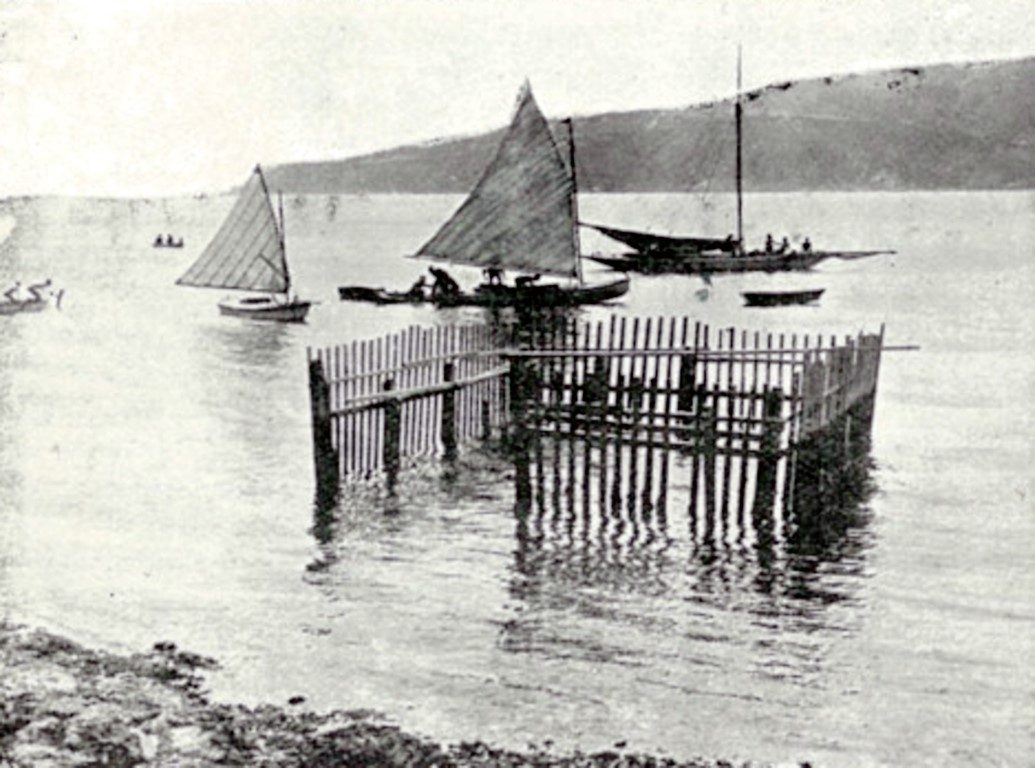
Dr Makgill was able to rescue the four-man crew of Defiance by being on the spot. He protested to the club about starting mis-matched centreboarders in heavy weather and without life-saving gear. As Wellington’s Medical Officer of Health, they listened to him, reinstated him in the Third Class and provided more sheltered course for the 14-footers.
In January 1907 Dr Makgill sold Malua to A.G. Burns and bought the Auckland keel yacht Janet. Alex Sutherland and his brother Bill had built Janet at their parents’ home in Domain Street, Devonport in 1902.
Alex Sutherland was a shipwright working for Charles Bailey who had designed her for him as a 24ft Linear Rater (32ft loa, 24ft lwl, 7ft beam, draught 4ft 10ins) in the modern style of modest-sized ‘raters’.
There had been a surge in new building these raters from 1900, most examples being from the pen and yards of Charles Bailey Jr, (Speedwell, Matua) and Walter Bailey of Bailey & Lowe, (Bona, Miro, Eulalie). The best of the bunch, however, was Logan Bros’ Queenie. When the Sutherlands started building a bigger yacht, the 40-footer Waione, also designed by Charles Bailey, they decided to sell Janet.
Dr Makgill had Janet shipped to Wellington where he raced her from scratch in the Second Class, the most competitive class, with 11 yachts. Despite having a demanding job requiring considerable travel, he threw himself into racing Janet when he was in town and kept ahead of his rivals, mainly the old-timer Mahina (Charles Bailey Sr, 1891) and Wairere (Tom Le Huquet, 1902).
He served on the committee of the Port Nicholson Yacht Club and was elected Commodore in October 1908. A high point of his term as Commodore was an ‘afternoon tea’ he held on Somes Island, in February 1909, hiring the ferry Duco to convey those celebrants who did not travel by yacht. He gave trophies to yacht clubs, including the Kilbirnie and Evans Bay model yacht clubs. He gained the reputation of a raconteur and an entertaining public speaker.
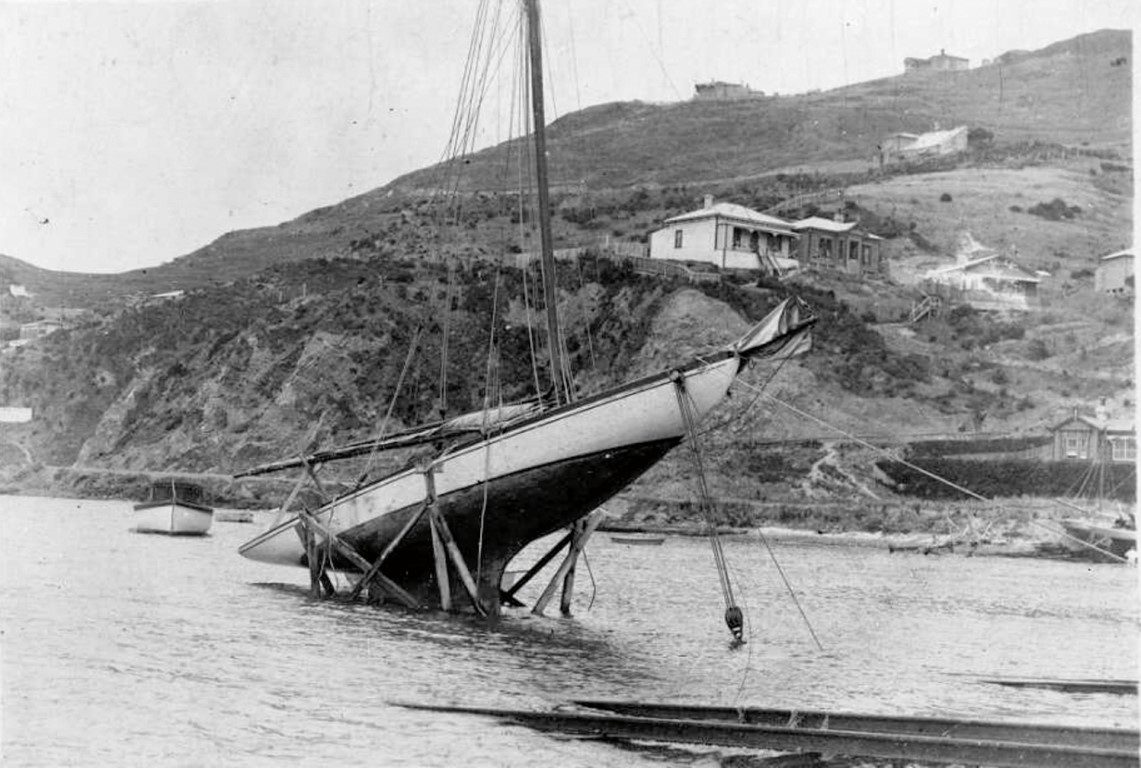
When he shifted to Auckland in 1910 to an even more demanding position, he sold Janet to Nigel Oliphant of Dunedin. He became active again with the Manukau Yacht Club and commissioned H.N. Burgess of Judges Bay to design and build him an up-to-the minute 25ft launch for pleasure use and the occasional launch race on the Manukau Harbour.
Makgill named her Scout, probably in tribute to the Boy Scout movement which was sweeping the world and which later did such great service during the influenza pandemic. Her dimensions were 25ft loa and beam 6ft. She was fitted with a single-cylinder 6hp Brit heavy-duty marine engine, British-built of course, even to its Simms low-tension magneto instead of the usual German Bosch. The Brit drove Scout along at 600rpm and 8mph. Her generous cockpit and her dodger, well in advance of its time, made her ideal for harbour fishing.
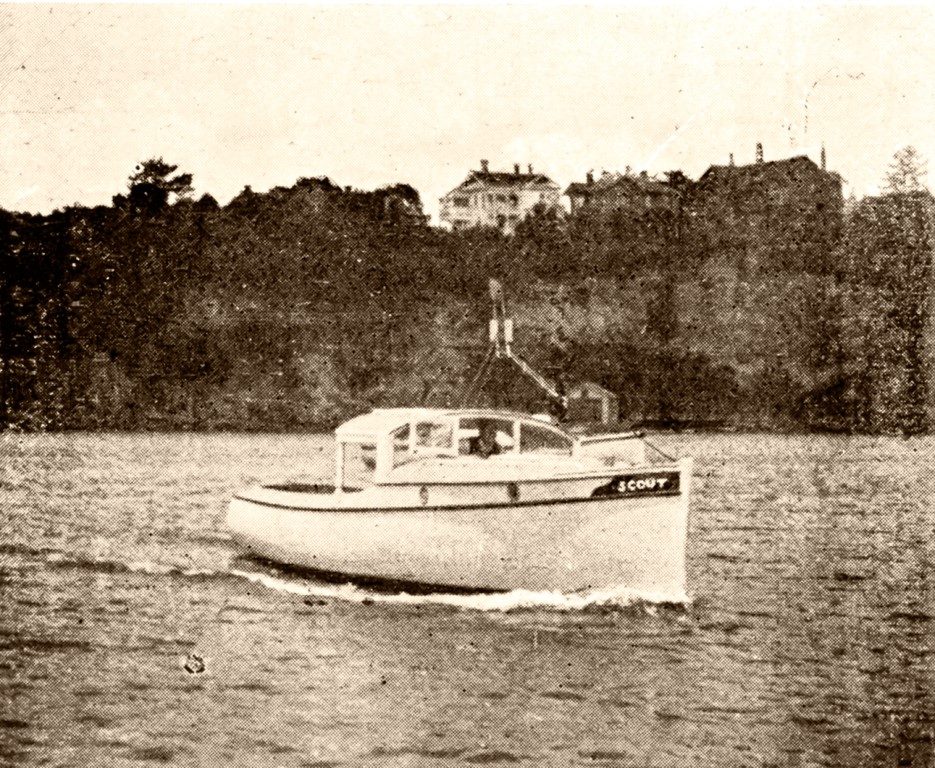
Dr Makgill never married and retired in 1932. Several years before, he had developed a superb orchard called The Garth in Lincoln Road, Henderson, where he devoted his energies to experimental work on combating orchard pests and improving plant stocks and, in particular, helped with the cultivars of the ‘Chinese gooseberry’ which became the kiwifruit stocks of today.
This passage occurs in a 1926 newspaper report on the orchard, “As one turns from the well-lined bookshelves in a pleasant room……to look over lines of fruit and shelter trees sloping down to the tidal creek where a smart little yacht reclines against a tiny jetty, it is easy to realise that there are not many pleasanter places than a home in an orchard.”
During the 1930s he visited his Haldane relatives on several occasions by signing on as doctor on ‘Home’ ships. He died in October 1946, but his memory has remained fresh among New Zealand’s Public Health community, particularly in these last months of the Covid-19 epidemic, a re-run of 1918–19.

